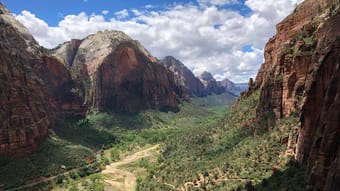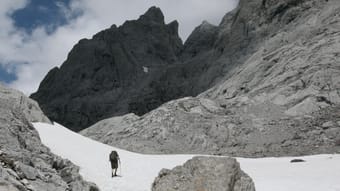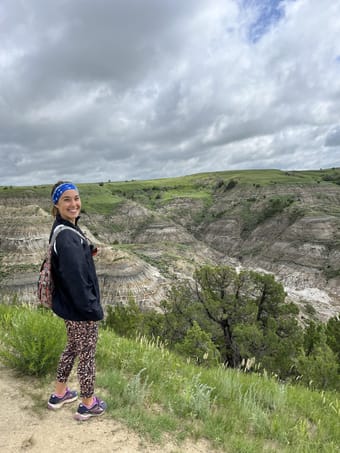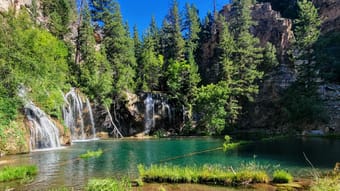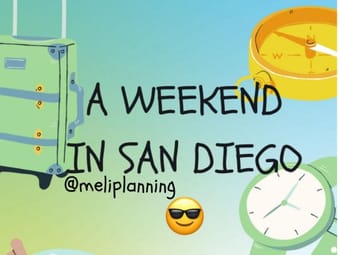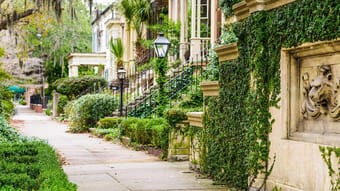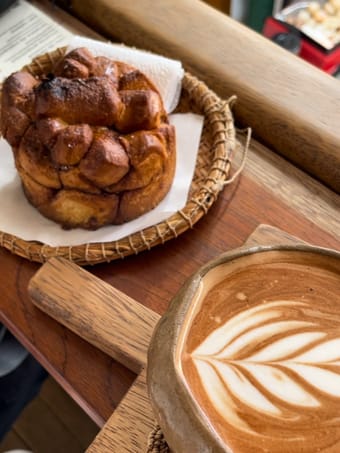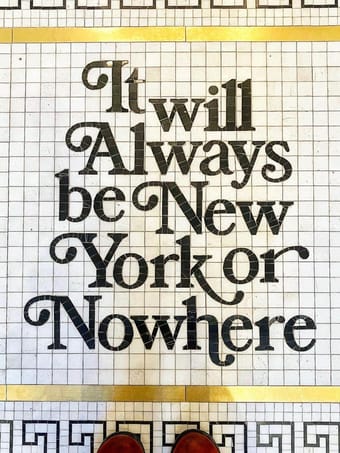Results for North America
Ever wanted to explore different cuisines and didn't know where to go? Look no further than right here. I've compiled a list of sixteen places that are a must-visit if you want to try something new in Seattle. 🤩
In this map, you will see options for 🇹🇷 Turkish, 🇧🇦 Bosnian,
🇺🇦 Ukrainian, 🇬🇷 Greek/Mediterranean 🇸🇾🇯🇴🇱🇧, 🇩🇿🇹🇳🇪🇬🇱🇾 North African, 🇵🇸 Palestinian, 🇲🇦 Moroccan, 🇦🇷🇲🇽🇭🇳 South/Central American, 🇮🇳 Indian, 🇨🇳 Southeast Asian, 🇳🇬🇪🇹 African, etc cuisines. If you have any dietary restrictions, I recommend checking with the restaurant itself before your visit.
As someone who grew up in Seattle and lived there from the ages of two to eighteen, I've had my fair share of great food experiences. Below are the recommendations I share with you!
As always, if you enjoy this map, please consider leaving a tip down below!
Don't forget to download Thatch app to access full features and to save ☑️ this map for future use!
Family • Couples • Groups • Foodie • People & Culture • Slow Travel
Free
2
My guide to backpacking Central America is finally here! This guide is based on hundreds of hours of research, my own 4 month long trip, and some extras that I wasn't able to get to but would still highly recommend based on reviews from trusted friends! This guide serves as an essential list of the best attractions in each country and what not to miss! The route in the guide is laid out North to South, starting in Belize and ending in Panama, but it can also be used in reverse.
The guide includes information for how to get between locations; however not in great detail as the schedules and prices change frequently and let's be honest, the busses are never on time in Central America! The best way to get between places depends on your timeline and budget of your trip: if you have months to explore, take the local "chicken busses" for a more affordable and immersive experience; if you only have weeks, take the more direct shuttles; and if you're tight on time, take the more direct and upscale coaches. Whichever option you choose, the locals are always willing to help with chicken busses, and shuttle busses and coaches are very easy to book throughout Central America at your hostel, any tour operator, or online.
Where possible, I included accommodation recommendations for places that I personally stayed at and can vouch for, or know someone who did. In addition, there are links for booking hostels in each region!
I hope this guide provides some help and inspiration to backpack Central America, it's one of my absolute favourite places on Earth!
Need a custom trip planned for Central America? Reach out, I can help you!
Digital Nomads • Backpackers • Solo Female • Couples • Car-free • Adventure • Budget • Nature • Beach • Slow Travel • Relaxation • Road Trip
$10.00
0
An in order backpacking trip from north to south, starting in Belize and ending in the beautiful Bocas Del toro Panama. This guide is for the adventure traveler who wants to experience the beautiful waterfalls in Costa Rica to attending a treehouse rave in Nicaragua or cliff jumping into a volcanic lake in Guatemala. Each country has the most vibrant unique culture and this guide is perfectly curated to help you experience all that it has to offer.
Including:
•recommended hotels and hostels
•the best nightlife
•highly rated local food recommendations
•the most beautiful sights in each country
$15.00
2
There are so many amazing national parks within driving distance in this area. We have had a lot of people ask us to share our itinerary for this specific trip. So, here is our version of the BEST itinerary for a road trip through the American Southwest.
We took this trip at the end of May into the first week of June. We actually did the trip in the reverse direction that I am going to list here, but you get to learn from our experience. If you travel in late spring or early summer, we feel that the direction below is the best direction. If you travel in late summer or early fall, you would want to reverse the direction.
Families • Couples • Backpackers • Adventure • Budget • Nature • Road Trip • Mountain
$10.00
4
Hi! We're Andrew and Brenna, currently living full-time in our Ram Promaster as we venture through the U.S. The southwest has found its place in our hearts due to the abundance of amazing locations to camp for FREE. There are thousands of acres of BLM and National Forest land that allow you to stay entirely free!
The places in this guide are our can't-miss campsites, and we'll continue to update this guide whenever we find somewhere new. All of these spots can be found on iOverlander and can be accessed with a 2WD vehicle. Please remember to pack in and pack out so we can keep these areas clean and free!
Couples • Backpacker • Digital Nomads • Adventure • Camping • Outdoors • Overlanding • Photography • RV • Relaxation • Road Trip • Slow Travel • Van Life
Free
1
Wallace Stegner, and many since him, have called our National Parks, “America’s best idea”, and we have to agree. Though we love to car camp in places that are less-well-known, there’s definitely something to be said for visiting these gems, and camping at them. Below are some of our favorite campgrounds in and around national parks in the United States that are optimal for car camping with your Luno mattress.
Car-free • Nature • Camping • Adventure • Roadtrip
Free
18
The Boston Freedom Trail is a 2.5-mile-long path through historic Boston, showcasing iconic sites tied to America's revolutionary past.
A unique journey into history, it connects pivotal landmarks from the colonial era.
A self-guided tour, it offers a deep dive into the birth of a nation, typically taking about 2-3 hours to walk.
50+ • Backpacker • Family • Groups • Couples • Female Solo • Digital Nomads • History
Free
5
Seven-day trek based in refugios.
INTRODUCTION
The Picos de Europa is a region of limestone peaks reaching over 2500 metres above sea level; the highest being Torre de Cerredo at 2650 metres. The route described here is one that I hiked alone in early summer. The best time to tackle the route is between June and September. There is more likely to be snow on the high passes in early June but they are usually not to difficult to negotiate.
The Picos de Europa is not as well known as the Pyrenees or Alps and as such the hiker traffic is less and the tourist infrastructure is less developed. This makes the area feel less spoilt but it can also make it a more challenging area to explore with fewer trails and little to no signposting. Always take a map with you: the Editorial Alpina 1:25,000 maps are the best. I took these and also used the outdooractive app and downloaded the relevant map tiles. This is useful for pinpointing where you are, in what can be confusing terrain. I was lucky to have clear weather for my entire trek but I would imagine that it's pretty difficult to navigate when the cloud is down on the mountains so take a compass too.
You can stay in refugios every night on this hike and wild camping is permitted above 1500m; details below.
I can't recommend the Picos de Europa as a hiking destination enough. The mountains are magnificent but there are also beautiful extensive woodlands at lower altitudes, as well as meadows full of wildflowers and butterflies. The juxtaposition between the stark limestone peaks and the gentle greenery of the valleys is beguiling.
DISCLAIMER: Please note that hiking in the Picos de Europa is not risk free. It is a very challenging area in which to hike. I accept no responsibility for any accidents you may experience while hiking this route. You are responsible for your own safety. Some of the dangers and difficulties are listed a little further down this guide.
HOW BUSY?
Unlike some of the more well know hikes around Europe this trail is less well trodden and as such the trail can be quite hard to follow at times, and at other times there is no trail! Despite this, refugios, being small, fill up fast (see below).
REFUGIOS
The hike is made easier if you stay in the staffed refugios where you can recharge your metaphorical batteries. Accommodation at these mountain huts is in communal dormitories and you will need to bring your own sleeping bag. It's best to book ahead as they are often full throughout the summer. Prices are around the €12-17 mark and they also do affordable meals (breakfast, picnic lunch and dinner).
There is also a handful of unstaffed, very basic mountain shelters with no services and no beds but these can be a good option in an emergency. Most of the refugios only accept cash so be sure to take plenty with you before you set off as there are no ATMs! All the refugios on the route are listed in the route description below with website links.
WILD CAMPING
Camping is only permitted at 1500m above sea level or higher. There is not much water anywhere above this altitude so be sure to fill up when you get the chance (at refugios) before camping in a remote spot.
POSADA DE VALDEON
This beautiful village tucked in the valley between the Macizo Central and Macizo Occidental is a lovely place to wander for a few hours. At the centre of the village there are a number of restaurants and bars and a small square with a water fountain. If you need somewhere to stay before or after the trek you'll find hotels, guest houses and a youth hostel. There is a hotel recommendation and link in the route description.
In the centre of the village is a pharmacy should you need any blister plasters! And on the road to the west of the village is the National Park office where you can find information about hiking and anything else to do with the national park.
GETTING THERE
From the UK there are Ryanair flights to Oviedo (Asturias airport) from London Stansted. A bit further afield you can get flights to Bilbao and Santander from the UK and the rest of Europe. Getting from the airport is a little complicated but there are buses to Posada de Valdeón from Oviedo changing in Cangas de Onis. The journey takes about 4.5hrs. There are also buses from Santander and Bilbao changing in Llanes and Riaño with the journey taking around 15hrs from Bilbao.
An easier but more expensive option is to get a taxi. You could also hire a car but of course you will have to leave the car sitting idle in Posada de Valdeón while you do the hike.
FLORA & FAUNA
This area of northern Spain is fantastic for wildlife. At lower elevations the beech and sessile oak woodland stretches for miles over rolling hills. This is part of the boreal forest that once would have covered much of Europe and is home to roe deer, wild boar, red squirrels, pine martens and brown bears.
In the skies you have a good chance of seeing griffon vultures, golden, booted and short-toed eagles, black kites and peregrines. Of the smaller passerine species the Picos are home to red-backed shrikes, black redstarts, spotted flycatchers and black woodpeckers.
But it's the wildflowers in the meadows and on the woodland edges that are the real joy and most easily appreciated. Vetches, cinquefoils and orchids create a colourful patchwork of colours with butterflies bringing the whole scene to life. Look out for swallowtails, fritillaries and hairstreaks.
NAVIGATION
Navigation is difficult as the terrain can be confusing and in many places there is no trail whatsoever. Take a map (1:25K Editiorial Alpina maps are the best), compass and GPS and know how to use them. It's also a good idea to download the map on a relevant map app. I used the outdooractive app but others are available.
WEATHER
Thunderstorms are common, usually in the afternoon and these can be particularly dangerous high up in the mountains. It's best to hike early and get to a refugio by lunchtime if there are afternoon thunderstorms in the forecast. The weather in this part of Spain is very changeable as it has a maritime climate. Rain and thick fog are possible but equally long periods of warm sunshine are not unusual. The best advice I can offer is to be prepared for anything. Pack suncream and a sunhat but don't forget your waterproofs either.
FALLING ROCKS
Rock falls are not unusual as chamois and other hikers can dislodge rocks above you. Getting caught in a rockfall is not so common but not impossible. Be aware and if you see rocks heading your way, and cannot find cover, crouch down on the floor and pull your rucksack over your head and back.
DRINKING WATER
There is very little running water as these mountains are mostly comprised of permeable limestone. You will need to take plenty of water with you each day (I packed three litres every day and usually drank it all). You can fill up at the refugios and there are a few fountains / fuentes although most of the ones I saw marked on the Editorial Alpina map were dry when I found them.
THE SUN
Sunburn and sunstroke are both real dangers and there is little shade. Keep hydrated and wear a sun hat that covers your neck.
TERRAIN
In some places you need to scramble up steep rocky sections. You will need to have experience in this kind of terrain and have a head for heights! The terrain is very rocky and uneven at higher altitudes so you will need strong, sturdy footwear. Trekking poles are also invaluable in providing support and helping you across and up awkward sections. There is also a lot of steep ascent and descent on this route so you will need to be reasonably fit.
DANGEROUS ANIMALS
On many parts of the trail you will encounter cows. In my experience they are very docile and used to trekkers so they shouldn't be of any concern. You may also find flocks of sheep and while these aren't dangerous they are often accompanied by shepherd dogs which have been trained to keep intruders away from the flock. They can be quite intimidating when they start barking at you. If you see sheep ahead it is best to give them a wide berth, even if this means veering away from the trail for a while. If you walk directly towards or through a flock of sheep you risk agitating the shepherd dogs.
Bears are not common in the Picos de Europa but there are bears in other parts of the Cantabrian Mountains, notably Somiedo National Park, not far to the west, and there is always the possibility of seeing an itinerant bear wandering through the Picos. Eurasian brown bears are not as big nor aggressive as the grizzly bears of North America so you shouldn't worry too much about an encounter. It's extremely unlikely you will see one so if you do, consider yourself very lucky.
Wild boar are common in the woodlands at lower altitudes. They are not as aggressive as some people will tell you and tend to be nocturnal. I did see some in the daytime near Vegabaño. As soon as they saw me they ran away, crashing through the undergrowth. As with any large animal it's best to simply give them plenty of space to move away from you.
I hope none of this advice puts you off hiking in the Picos de Europa. Yes, it's a challenging mountain area but the rewards for hiking here are great. Enjoy the hike!
Adventure • Nature • Slow Travel • Sustainable/Eco • Mountain • Camping
$12.00
3
A budget-friendly, outdoors guide to road tripping across North Dakota and to Theodore Roosevelt National Park.
Total trip time: 5-7 days
Nearest major cities to start from: Fargo, Bismarck
Digital Nomads • Couples • Groups • Vegan • Female Solo • Family • Adventure • Slow Travel • Sustainable/Eco • Van Life • Road Trip • Budget • Camping • Outdoors
Free
3
Explore scenic coastal views, vibrant cherry blossoms, majestic canyons, bewildering parks, and serene lakeshores across the United States of America. Save this guide to your library for easy access and inspiration.
Nature • Road Trip • Outdoors • People & Culture • Architecture • Adventure • Photography
Free
0
Let’s get into my top pre-hispanic archeological sites, that áre and aren’t worth the hype. It took me a few years and 3 different trips to Mexico and Central America to see all the most relevant sites. Let’s go from North to South, starting in Mexico City.
Adventure • Overlanding • Architecture • Art • History • People & Culture • Outdoors • Road Trip • Slow Travel
Free
6
Welcome to Boston, the most European city in the US! Being my American home, here are all the best things to do in this incredible and historic city. Here you will find everything from Boston icons to hidden gems only locals know about, and tips!
Boston is an extremely walkable city and one full of wonders. Being a long-walks-lover, I've explored every corner of this city, and I want to share it all with you - from the Boston Icons to the Local favorites and hidden gems.
I couldn't love this city more, and I'm making it my mission to ensure you experience the absolute best of this city - so you too, may fall in love!
Keep reading to discover all the best things to do in Boston, including local favorties and hidden gems.
Car-free • Digital Nomads • Female Solo • Family • Couples • Business • Groups • History • Foodie • Architecture • People & Culture • Shopping • Slow Travel • Art • Luxury • Boutique
$24.99
5.0
(1)
4
Savannah, Georgia is an attractive place to visit for a variety of reasons, including its rich history, charming architecture, natural beauty, and vibrant culture. There is truly something here for every type of traveler!
A few city highlights include:
- Food & Drinks -
Savannah boasts a thriving culinary scene, with a focus on Southern cuisine. You can enjoy classic dishes like shrimp and grits, fried chicken, and pecan pie in charming restaurants and eateries throughout the city.
- Arts & Culture -
Home to numerous art galleries, theaters, and cultural institutions, making it a hub for the arts. The Savannah College of Art and Design (SCAD) contributes to the city's vibrant creative community.
- Rich History -
Savannah played a significant role in American history, from its founding in 1733 to its involvement in the Civil War. Museums, historic sites, and informative tours provide insight into the city's history.
Couples • Family • Digital Nomads • Art • Boutique • Design • Foodie • History • Relaxation • Road Trip • Romantic • Shopping
Free
3
Cusco is a unique city among its South American peers. The capital of the Inca Empire, the Spaniards built a city on top of the old Incan city - using the Incan rocks all over the bottom of buildings. The facades of the buildings diverge significantly from the colorful stucco of its peers; it whitewashed buildings with blue accents as far as the eye can see. It would be easy to confuse this for coastal Greece or North Africa if you weren't aware of the lack of water.
Cusco - just a comfortable train ride from Peruvian Disneyland (aka Machu Picchu) - has become the center of Peru's tourism industry. And while some parts of this make traveling to Cusco less authentic (you'll be able to imitate the ladies trying to sell massages really well by the end of your trip), Cusco's food and drink scene has exploded from the tourism rush.
The best part (in my opinion)? A coffee scene predicated around local Peruvian coffee. The coffee shops in Cusco could rival coffee in most large cities in Western countries. If visiting Cusco, make sure to set aside some time in the morning or afternoon to look into some of these awesome coffee shops!
Coffee • Foodie
Free
2
This walk is for those that love history, food, and culture, and the idea of taking your time to immerse yourself in one thing and doing it really well. Lafayette is a north-south street in Manhattan named after the Marquis de Lafayette, the French aristocrat and hero of the American Revolutionary War. It begins at the intersection of Reade and Centre Street and runs thru Chinatown, NoLIta, NoHo and ends near Astor Place.
🚶🏻♀️ 1.2 Miles: Breezy
50+ • Car-free • Couples • Groups • Female Solo • Adventure • Architecture • Art • Coffee • Foodie • History • People & Culture • Photography • Budget
Free
1
Welcome to my completely unorganized but oh-so-helpful map of Denver! An absolute smorgasbord of my own travels and research, suggestions from friends and strangers, and many treasures found along the way, this is where I compile all things Denver for my future trips and yours. Things I particularly love that you’ll find a lot of:
☕️ Coffee shops & bakeries
🌮 Local cuisine
🏛️ Museums of all kinds
🌳 Gardens & parks
🛏️ Boutique hotels
🍕 Small regional chains with good reputations
All my guides in this category are $5 per 100 places included, but since I add to these constantly, you can lock down the lowest price today and gain a lifetime access!
*Great American Beer Festical held in Oct, Taste of Colorado on Labor Day Weekend. Check out CRUSH WALLS mural festival. Large Mexican immigrant population. Technically a desert, so stay hydrated!
Family • Couples • Architecture • Art • Budget • History • Foodie • Coffee • People & Culture
$10.00
0
Welcome to my completely unorganized but oh-so-helpful map of Phoenix and Scottsdale! An absolute smorgasbord of my own travels and research, suggestions from friends and strangers, and many treasures found along the way, this is where I compile all things Phoenix for my future trips and yours. Things I particularly love that you’ll find a lot of:
☕️ Coffee shops & bakeries
🌮 Local cuisine
🏛️ Museums of all kinds
🌳 Gardens & parks
🛏️ Boutique hotels
🍕 Small regional chains with good reputations
All my guides in this category are $5 per 100 places included, but since I add to these constantly, you can lock down the lowest price today and gain a lifetime access!
6.75h from Albuquerque, 4.75h from Las Vegas, 4.5h from Joshua Tree, 5.5h from San Diego, 5.5h from Anaheim, 3.5h from the Grand Canyon
Foodie city Suggestion from The Discoverer, good for Native American and Mexican influence.
Couples • Family • Architecture • Art • Budget • History • Foodie • Coffee • People & Culture
$5.00
1
Natalie 🦩
Available for hire
‣ Riding the Wild West: A 15-Day (Motorcycle) adventure through Nevada, Utah, and Arizona 🏍️🌵
Embark on the adventure of a lifetime with my firsthand experience as your guide!
Picture this: a thrilling 15-day road trip weaving through the mesmerizing landscapes of Nevada, Utah, and Arizona. Now, here's the beauty – whether you prefer the wind in your hair on a motorcycle, the comfort of a car, or the spacious freedom of an RV, this journey is tailor-made for you.
From the dazzling lights of the Las Vegas Strip to the jaw-dropping beauty of Utah's national parks and the iconic wonders of Arizona, my guide has got you covered. I'll map out each day, pointing out must-see spots, hidden gems, unique sleep locatipons and the best experiences to make your journey unforgettable.
So whether you're revving up your motorcycle, hitting the road in a car, or cruising in an RV, get ready for a road trip filled with breathtaking views, cultural discoveries, and unforgettable moments in the heart of the American Southwest! 🏍️ 🚗 🚐🇺🇸
50+ • Backpacker • Couples • Digital Nomads • Family • Groups • Female Solo • Adventure • Camping • History • Outdoors • People & Culture • RV • Road Trip • Van Life • Photography
$65.00
1
Try ThatchGPT




